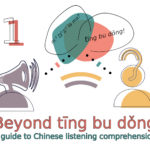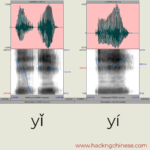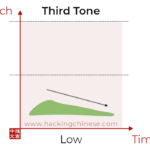Articles in the ‘Science and research’ category Page 2
-
Beyond tīng bu dǒng, part 1: A guide to Chinese listening comprehension
Listening comprehension is essential when learning Chinese, but if we want to improve, we need to move beyond tīng bu dǒng and identify what the problem really is.
Read → -
How to become fluent in Chinese
Being fluent in Chinese is more about being good at applying what you know, rather than knowing everything. Many students focus too much on learning new things, and neglect mastering what they’ve already learnt.
Read → -
Analyse and balance your Chinese learning with Paul Nation’s four strands
When learning Chinese, it’s hard to make sure you’re doing the right things. Paul Nation’s four strands allow you analyse and balance your learning!
Read → -
The building blocks of Chinese, part 6: Learning and remembering compound words
Compound words in Chinese can look confusing at first, but once you see the patterns, learning and remembering them becomes much easier.
Read → -
The building blocks of Chinese, part 5: Making sense of Chinese words
How many characters do you need to know to be able to read Chinese? The truth is that characters only provide a foundation, so regardless of how many you know, you won’t be able to read much unless you also know many words.
Read → -
6 challenges students face when learning to read Chinese and how to overcome them
Learning to read Chinese comes with several challenges, some of them unique to Chinese. What are these challenges, what do they mean for you as a student and how can you overcome them?
Read → -
Chinese language learning in the twenty-first century: Towards a digital ecosystem? Interview with Julien Leyre
Digital resources have made learning Chinese considerably easier than it used to be, but another problem has appeared: How can we make sense of and navigate the vast number of resources and find what’s best for us?
Read → -
Chinese language logging, part 2: A healthy, balanced diet of Mandarin
How do you balance your learning to make sure you get a healthy diet of Mandarin? Logging how much you listen, speak, read and write is easy, but are there better ways of doing it?
Read → -
Learning the second tone in Mandarin Chinese
Many students of Chinese struggle with the third tone, but almost as many also have problems with the second tone. So how should the second tone be pronounced, and what are the most common learner errors?
Read → -
Learning the third tone in Mandarin Chinese
The third tone in Mandarin is the most mispronounced of all. It’s an essentially low tone, but many learners are unaware of this, partly because the way the tone is taught is flawed. Don’t think of it as a falling-rising tone, just think of it as a low tone!
Read →









